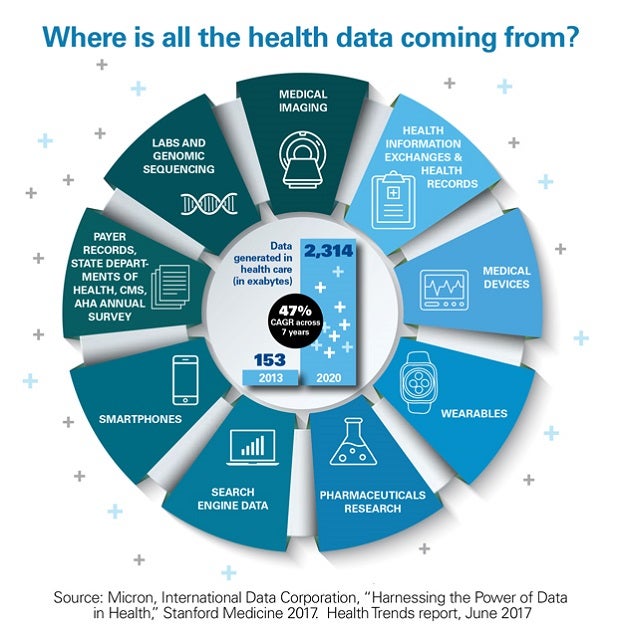

4 Keys to Becoming a Data-driven Organization

Allina Health in Minneapolis faced a vexing problem in its cardiovascular service line. Patients with atrial fibrillation (AFib) had lengths of stay two days beyond those without AFib. After examining clinical data and the details behind this trend, a protocol was developed to empower nurses to manage routine AFib after cardiovascular surgery and closely track the results.
Impressive results followed. When the protocol is employed, these patients achieve comparable outcomes to those without AFib in terms of adverse clinical events, length of stay and related costs. The data-driven initiative saved the cardiovascular service line more than $60 million over five years.
Experienced in value-based care, Allina Health’s success can be traced to its comprehensive data strategy and a team that deeply understands the information to provide meaningful insights so that corrective actions can be taken. Situations like this are being repeated with ever-increasing frequency as hospitals and health systems search for new ways to glean actionable insights from their data.

A new report, “Leveraging Data for Health Innovation,” from the AHA Center for Health Innovation explores this trend and provides a blueprint for leading a data-driven organization. It explores the explosion of health care data and top challenges facing provider organizations as they work to ensure data integrity, store vast amounts of data and learn how to utilize data to advance population health management and value-based care. Download the report and related assets to:
- Identify where on the continuum your hospital or health system is in being able to consistently make data-driven decisions.
- Examine how data strategy aligns with organizational strategy, including the people, processes and technology needed to drive success.
- Develop a governance structure so the organization can extract business and clinical value to support key initiatives.
- Learn to prioritize data projects based on key criteria.
Evaluate Your Maturity as a Data-Driven System
An essential step in becoming a data-driven organization is to understand strengths and gaps in data capabilities. Using the Maturity Framework tool helps hospitals and health systems assess where they are as a data-driven organization and how this impacts their digital transformation. It also aids in classifying the status of data assets, storage, analytics and infrastructure, talent, privacy and security, and more.
Discuss Key Initiatives to Guide Alignment
A quick assessment can help organizations take stock of current data capabilities and gaps, identify what’s being planned to achieve data-related goals and make recommendations for future enterprise data initiatives. The AHA members-only discussion guide provides important questions to ask to ensure that data strategy aligns with the organizational strategic plan and that the right personnel, processes and technology are in place to achieve transformation.
Develop Criteria to Prioritize Data Projects
A formal system needs to be in place to evaluate and prioritize data projects. The “15 Criteria for Prioritizing Data Projects” resource pinpoints key issues to consider as organizations decide when and where to invest limited data capital. An essential part of this process is developing a transparent intake system for accepting data project proposals and prioritizing them based on established and agreed-upon criteria.
Let Governance Guide Your Structure
To operationalize a data strategy that dovetails with an organization’s strategic objectives, hospitals and health systems need a set of rules that should be codified in data-governance policies and procedures. Data governance provides a formal structure for data management so organizations can extract clinical and business value to support key organizational initiatives.
Learn More
Two other recently released AHA assets also can support the work of data-driven organizations. The “Defining a Comprehensive Data Strategy to Shape the Health Care of Tomorrow” podcast covers how hospitals and health systems can focus on data and data assets to advance their organizational strategies. Don Trigg, president of Cerner, discusses first-mile and last-mile data strategies that are critical for providers to achieve scale and meaningful impact for their patients. Elsewhere, AHA Data’s Annual Survey Database includes a new data set that helps teams define cohorts and develop comparative insights by region to understand important benchmarks related to population health, technology adoption and other key IT indicators, alternative payment models and utilization.




